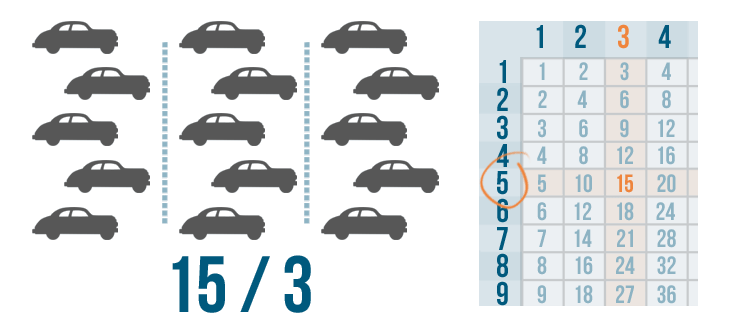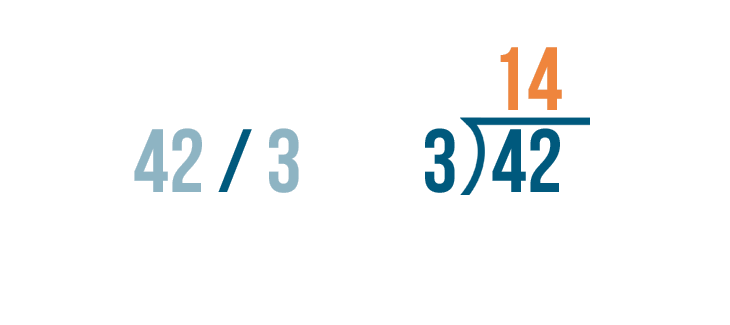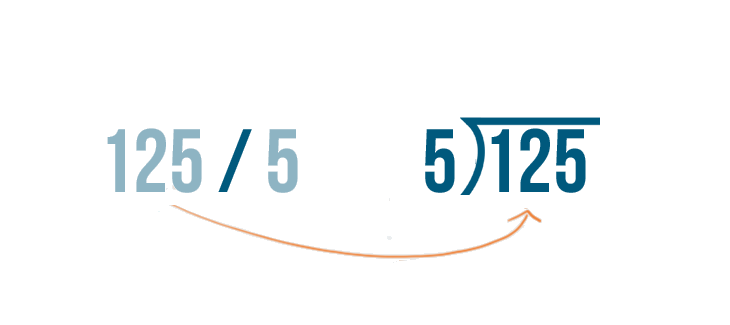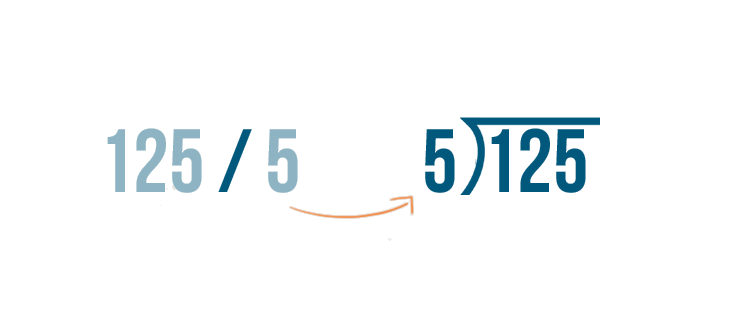Multiplication and Division
Long Division
Long Division
When you divide a number, you are splitting it equally. In Lesson 3, you learned that division can be a way to understand real-life situations. For example, imagine a car dealership has 15 cars. The manager wants the cars parked in three equal rows.
You could write the situation like this and use a times table to solve it:

After the cars are divided, counting them shows that each row should have five cars. Now, let's say the car dealership has 42 cars and the manager wants to park them in three rows. The situation would look like this:

This problem is harder to solve. It would take a lot of time to divide that many cars into three groups. Plus, there's no 42 in the 3's column on the times table. Fortunately, there is a way to set up the problem that makes it easy to solve one step at a time. It's called long division.
Let's learn how to set up these problems. We'll look at the problem we discussed above: 42 / 3.
Now you try it. Write these situations as long division expressions. Don't worry about solving them yet.
A store has 95 hats to divide equally between 5 tables.
You want to divide 120 pieces of candy equally between 8 children.
You have $650. You want to make equal donations to 10 charities.



















